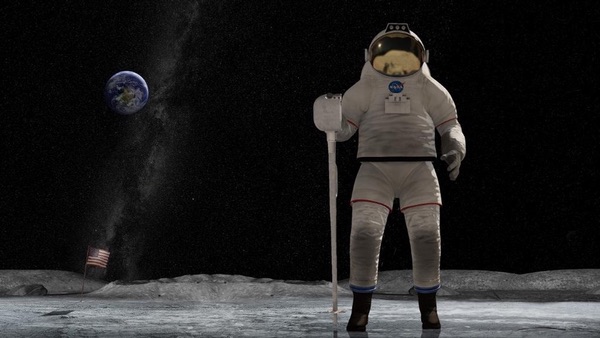Will Artemis fail in the halls of Congress?by Jonathan Coopersmith
|
| At its apogee, NASA’s budget reached 10 percent of the Defense Department budget. A similar ratio today would be over $70 billion compared with NASA’s current $20 billion. |
In the October issue of Aerospace America, space historian John Logsdon, in his usual astute style, described the two most important non-technical factors NASA got right for Apollo: engaging Congress in a partnership and enunciating clear, understandable geopolitical goals. At this point, the Trump Administration has not really accomplished either. Concern about the growing Chinese technological competition does not extend to the Moon.
An important part of that partnership was consulting with Congress about the cost. NASA Administrator James Webb asked his staff to realistically estimate what they thought Apollo would cost. He then doubled that number and told the White House and key members of Congress not to begin Apollo unless they were willing to spend that much money. Consequently, Apollo was the only human space project that did not overrun its budget. In 1960s dollars, Apollo cost about $26 billion (approximately $280 billion in 2019 dollars), depending on what is included.
And NASA received that funding. At its apogee, NASA’s budget reached 10 percent of the Defense Department budget. A similar ratio today would be over $70 billion compared with NASA’s current $20 billion.
Significantly, the Trump administration did not seek the support of Congressional leadership before announcing Artemis. Instead of the more neutral and natural sounding 2025, the 2024 deadline—the end of a second Trump term—makes Artemis’ goal seem a domestic political project. Apollo was also a political project, but internationally political, and its end-of-the-decade goal sounded nonpolitical.
Artemis is like Apollo in that its initiator comes from the president and the National Space Council, but without the quiet, prior consultations with Congress. For months, NASA and the White House could not offer a possible budget. Even now an official budget is not expected until 2020, though $20–30 billion seems a reasonable ballpark figure.
That funding could become a political football. Democrats may use Artemis as a bargaining tool. Already, Congressman José Serrano (D-NY), who chairs the House appropriations subcommittee overseeing space, has wondered if sticking to the original 2028 goal of landing astronauts on the moon might be less expensive, safer, and more reasonable.
| If Trump loses, then expect some Republican representatives and senators, who had no problem with a Republican president running trillion-dollar deficits, to suddenly find balanced budget religion and demand budget cuts from a Democratic president. |
That $20–30 billion is also approximately the lower range of cost for building Trump’s border wall. Estimates of the cost to US taxpayers range from a low-balled $18 billion by Customs and Border Protection to a less unrealistic $70 billion from the Cato Institute (which thoughtfully notes annual upkeep would cost $888,000 per mile.) The wall, which Trump originally claimed would be paid by Mexican taxpayers, could actually help sell Artemis for some Democrats: Invest money to explore and build, not on a symbolic and ineffective barrier.
If there is a second Trump term, expect a Northeast Democrat to note that $20 billion is approximately the cost of building a second Hudson River tunnel, an urgently needed bit of critical national infrastructure that the Trump Administration is conspicuously not funding, apparently to spite the Democratic governors of New York and New Jersey. I can imagine a legitimate quid pro quo: You want to build infrastructure in space, let’s build some infrastructure on Earth, too.
Even NASA administrator Jim Bridenstine’s pledge to land the first woman on the Moon can be used against Artemis. What if Congresswoman Eddie Bernice Johnson (D-TX), chair of the House Science Committee, who supports returning to the Moon but not necessarily by 2024, asks what else could we do for women and minorities in science and technology for $20 billion? There are lots of options.
The real danger to Artemis, however, could come from Trump’s own party. If Trump loses, then expect some Republican representatives and senators, who had no problem with a Republican president running trillion-dollar deficits, to suddenly find balanced budget religion and demand budget cuts from a Democratic president. Artemis could be an easy cut.
Similarly, the rising Department of Defense budget and growing probability of another recession may crimp available federal spending. One reason president Richard Nixon crushed NASA’s post-Apollo plans to land astronauts on Mars by 1985 was the money sink of the Vietnam War. Similarly, funding for President George W. Bush’s ambitious 2004 Vision for Space Exploration lost out to paying for the 2003 invasion and occupation of Iraq launched by President George W. Bush.
I hope I’m wrong. But I fear the Trump Administration has not created a strong structure of political support. As the old saying goes, “No bucks, no Buck Rogers.”
Note: we are temporarily moderating all comments submitted to deal with a surge in spam.
